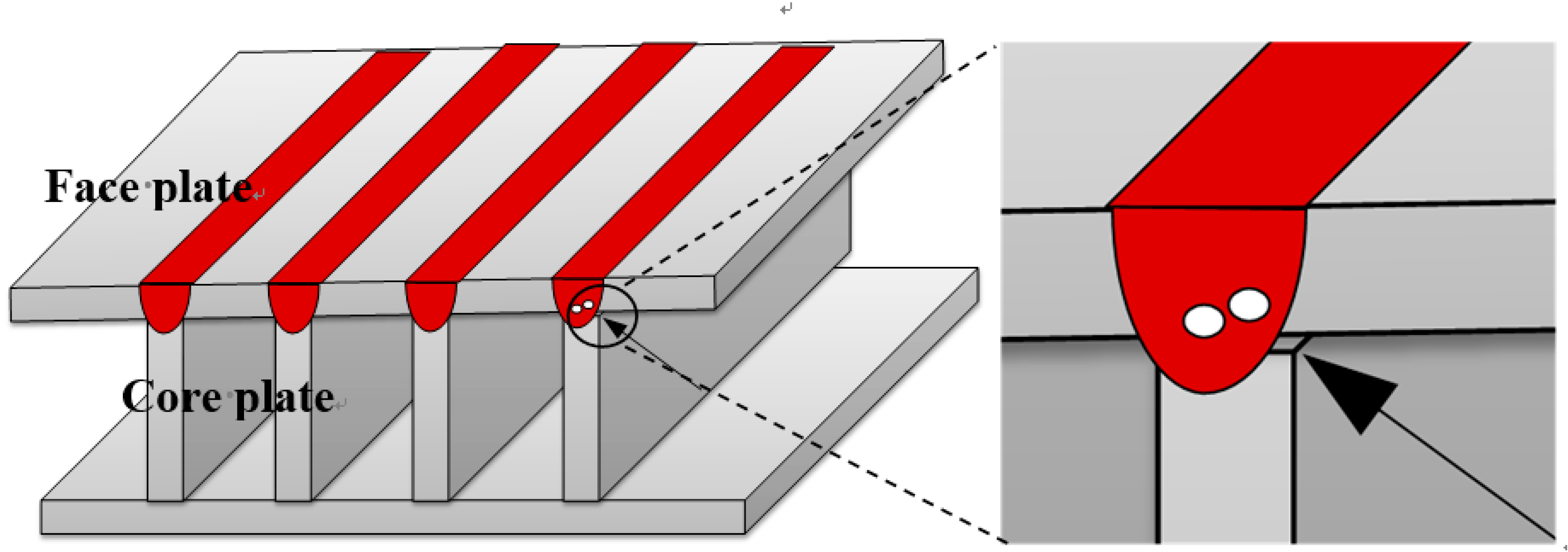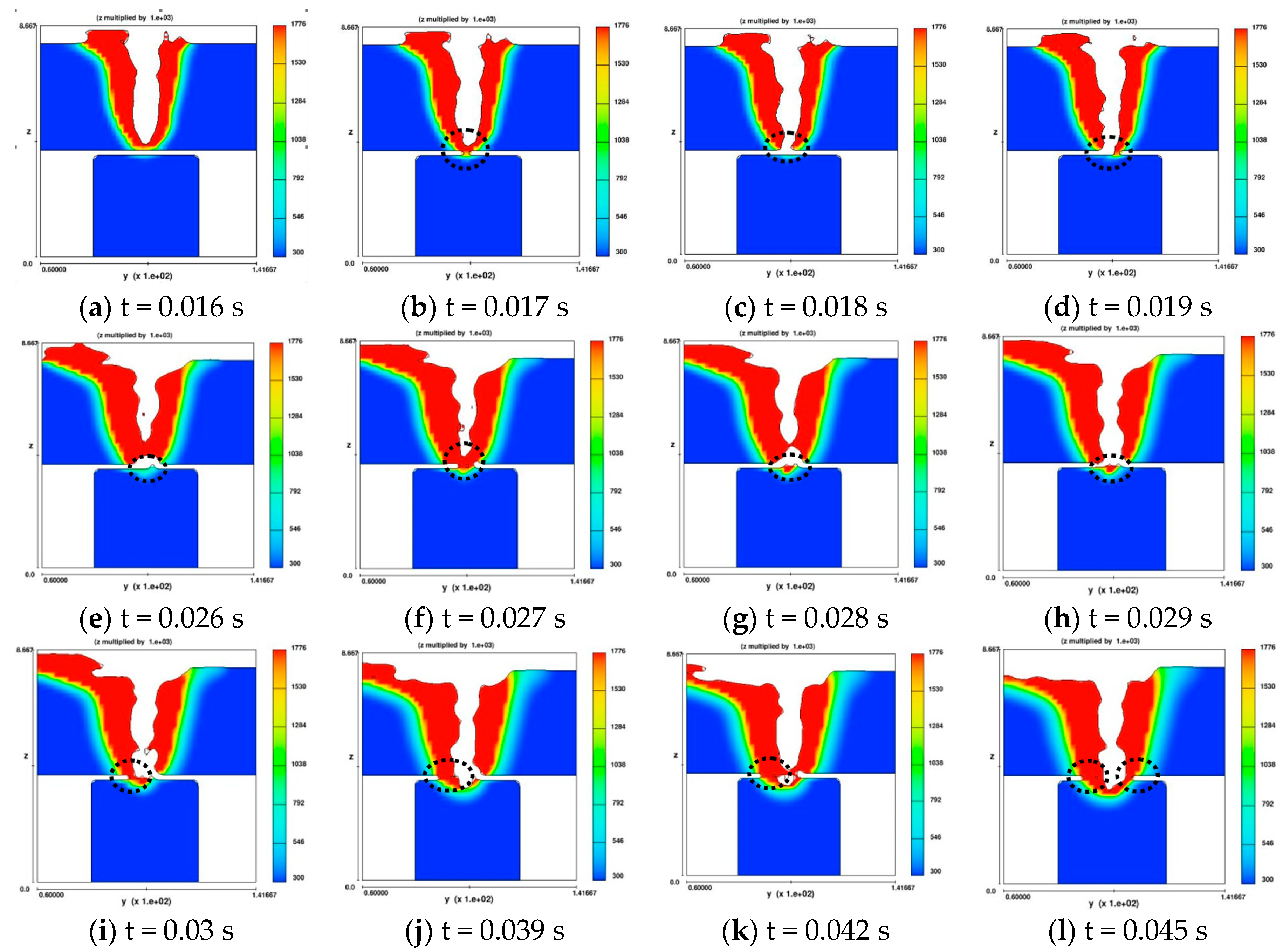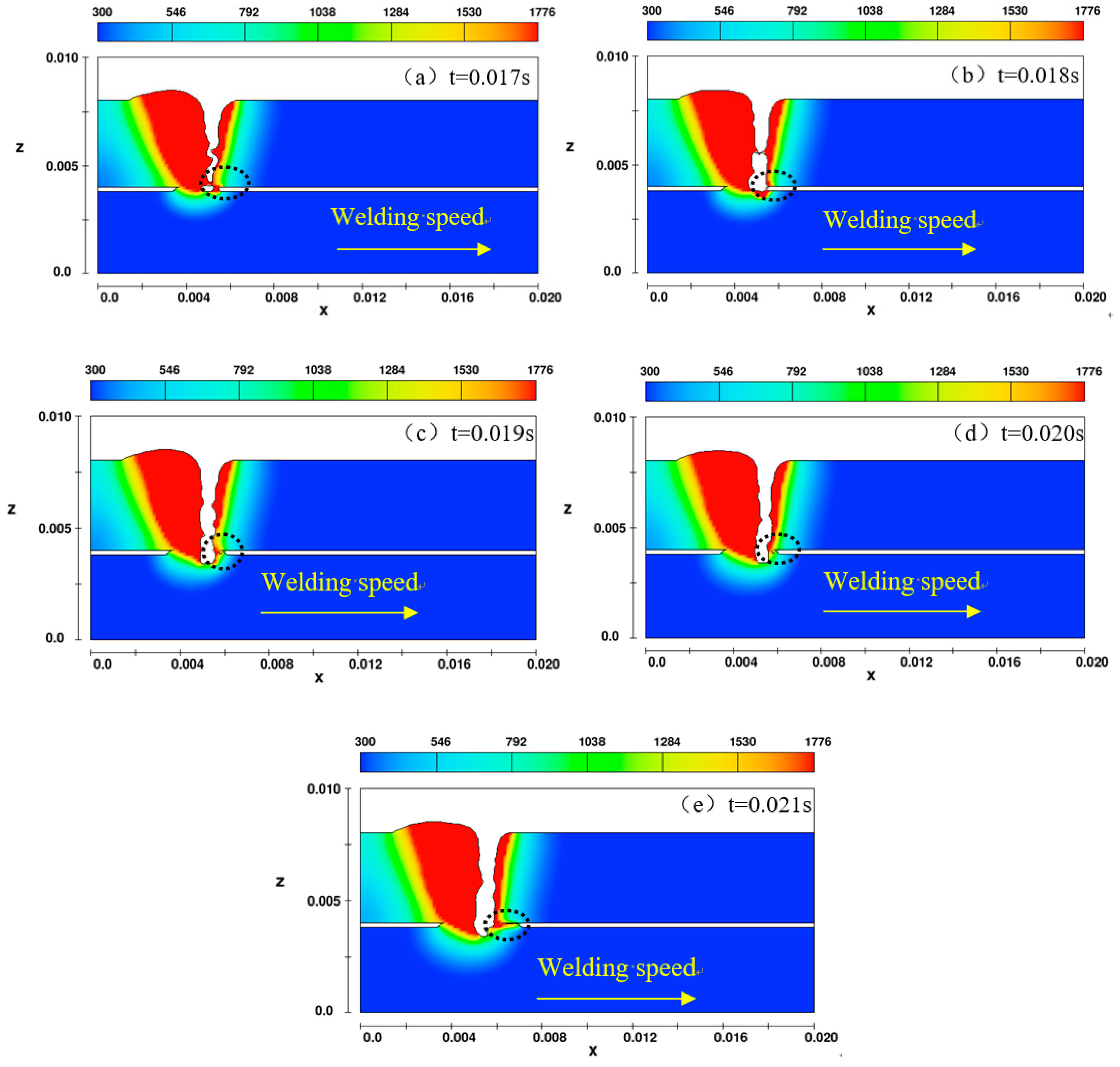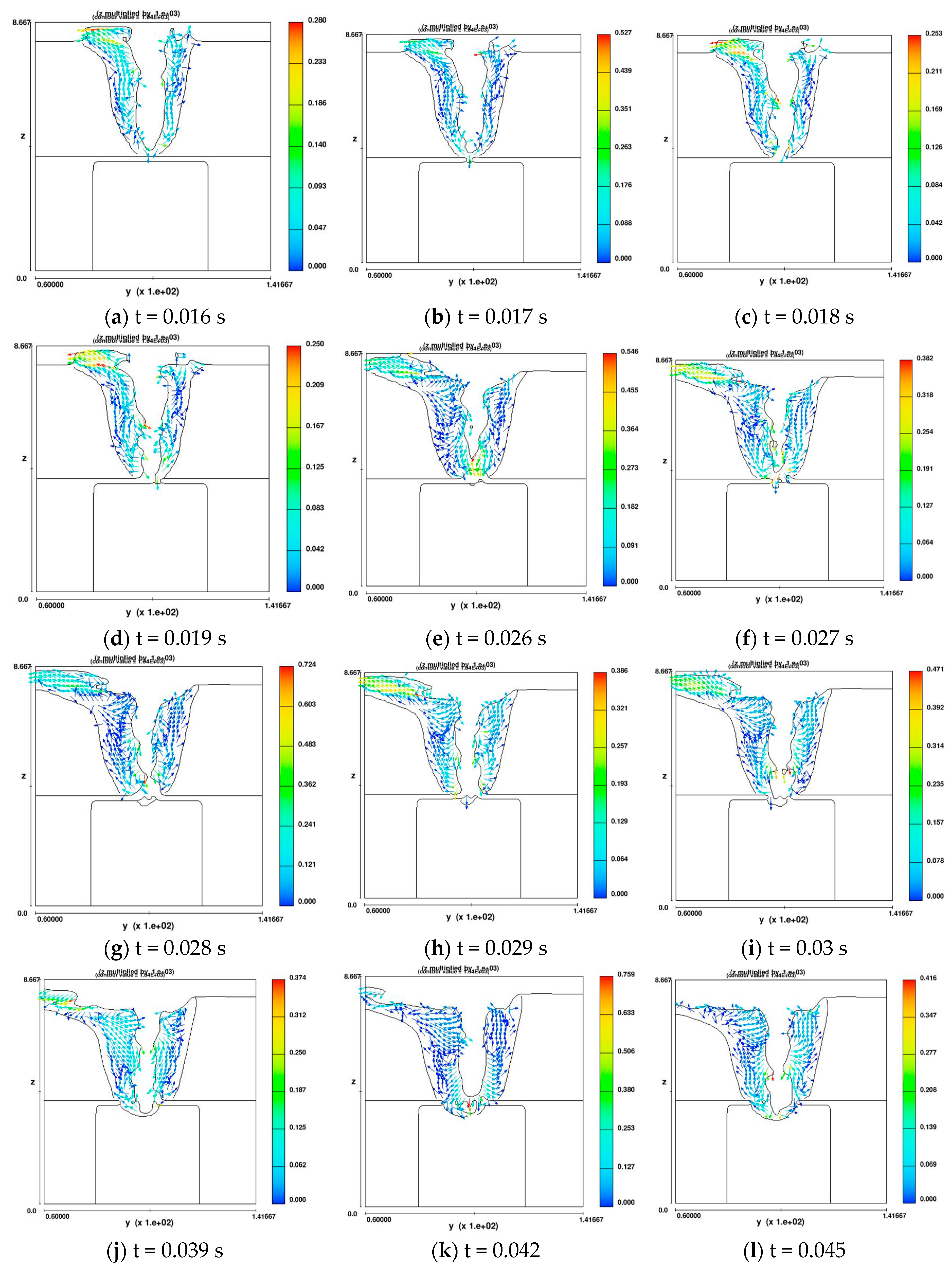Connection Mechanism of Molten Pool during Laser Transmission Welding of T-Joint with Minor Gap Presence
Abstract
:1. Introduction
2. T-Joint Laser Welding Model
3. Results and Discussion
3.1. Effect of Gap Presence during Welding T Type Joint on the Molten Pool Formation
3.2. The Velocity Field within the Molten Pool
3.3. Experimental Verification
4. Conclusions
Author Contributions
Acknowledgements
Conflicts of Interest
References
- Säynäjäkangas, J.; Taulavuori, T. A review in design and manufacturing of stainless steel sandwich panels. Stainless Steel World 2004, 55, 59. [Google Scholar]
- Sonawane, D.B. Design of circular core composite structure for structural applications. Int. J. Res. Emerg. Sci. Technol. 2015, 2, 261–267. [Google Scholar]
- Frank, D.; Romanoff, J.; Remes, H. Fatigue strength assessment of laser stake-welded web-core steel sandwich panels. Fatigue Fract. Eng. Mater. Struct. 2013, 36, 724–737. [Google Scholar] [CrossRef]
- Romanoff, J.; Varsta, P.; Klanac, A. Stress analysis of homogenized web-core sandwich beams. Compos. Struct. 2007, 79, 411–422. [Google Scholar] [CrossRef]
- Kolsters, H.; Wennhage, P. Optimisation of laser-welded sandwich panels with multiple design constraints. Mar. Struct. 2009, 22, 154–171. [Google Scholar] [CrossRef]
- Romanoff, J.; Remes, H.; Socha, G.; Jutila, M.; Varsta, P. The stiffness of laser stake welded t-joints in web-core sandwich structures. Thin-Walled Struct. 2007, 45, 453–462. [Google Scholar] [CrossRef]
- Zhao, X.L. Deformation limit and ultimate strength of welded t-joints in cold-formed RHS sections. J. Constr. Steel Res. 2000, 53, 149–165. [Google Scholar] [CrossRef]
- Silva, L.F.M.D.; Adams, R.D. The strength of adhesively bonded t-joints. Int. J. Adhes. Adhes. 2002, 22, 311–315. [Google Scholar] [CrossRef]
- Mayboudi, L.S.; Birk, A.M.; Zak, G.; Bates, P.J. Laser transmission welding of a lap-joint: thermal imaging observations and three–dimensional finite element modeling. J. Heat Transfer 2007, 129, 1177–1186. [Google Scholar] [CrossRef]
- Li, X.; Zhang, P.; Wang, Z.; Wu, G.; Zhao, L. Dynamic behavior of aluminum honeycomb sandwich panels under air blast: experiment and numerical analysis. Compos. Struct. 2014, 108, 1001–1008. [Google Scholar] [CrossRef]
- Rathbun, H.J.; Wei, Z.; He, M.Y.; Zok, F.W.; Evans, A.G.; Sypeck, D.J.; Wadley, H.N.G. Measurement and simulation of the performance of a lightweight metallic sandwich structure with a tetrahedral truss core. J. Appl. Mech. 2004, 71, 368–374. [Google Scholar] [CrossRef]
- Lu, F.; Li, X.; Li, Z.; Tang, X.; Cui, H. Formation and influence mechanism of keyhole-induced porosity in deep-penetration laser welding based on 3d transient modeling. Int. J. Heat Mass Transf. 2015, 90, 1143–1152. [Google Scholar] [CrossRef]
- Blug, A.; Abt, F.; Nicolosi, L.; Heider, A.; Weber, R.; Carl, D.; Höfler, H.; Tetzlaff, R. The full penetration hole as a stochastic process: controlling penetration depth in keyhole laser-welding processes. Appl. Phys. B 2012, 108, 97–107. [Google Scholar] [CrossRef] [Green Version]







| Solid Density/kg·m−3 | Solid Specific Heat/J·kg−1·K−1 | Solid Conductivity/W·m−1·k−1 | Viscosity/Pa·s | Melting Point/K | Liquid Specific Heat/J·kg−1·K−1 | Liquid Conductivity/W·m−1·k−1 | Liquid Density kg·m−3 | Surface Tension/N·m−1 | Melting Latent Heat/J·kg−1 | ||
|---|---|---|---|---|---|---|---|---|---|---|---|
| 6990 | 710 | 27.2 | 0.0055 | 1776 | 680 | 26.7 | 7020 | 1.8 | 277,000 | ||
© 2018 by the authors. Licensee MDPI, Basel, Switzerland. This article is an open access article distributed under the terms and conditions of the Creative Commons Attribution (CC BY) license (http://creativecommons.org/licenses/by/4.0/).
Share and Cite
Xu, K.; Cui, H.; Li, F. Connection Mechanism of Molten Pool during Laser Transmission Welding of T-Joint with Minor Gap Presence. Materials 2018, 11, 1823. https://doi.org/10.3390/ma11101823
Xu K, Cui H, Li F. Connection Mechanism of Molten Pool during Laser Transmission Welding of T-Joint with Minor Gap Presence. Materials. 2018; 11(10):1823. https://doi.org/10.3390/ma11101823
Chicago/Turabian StyleXu, Ke, Haichao Cui, and Fuquan Li. 2018. "Connection Mechanism of Molten Pool during Laser Transmission Welding of T-Joint with Minor Gap Presence" Materials 11, no. 10: 1823. https://doi.org/10.3390/ma11101823




